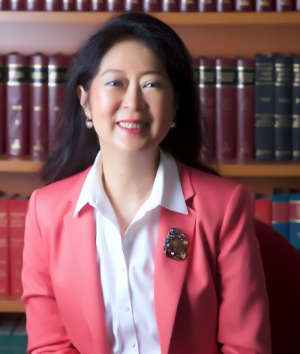
Law Society Family Mediation Scheme
Forging a New Path for Alternative Dispute Resolution in a Therapeutic Justice Landscape

Engelin Teh, Senior Counsel and managing director of Engelin Teh Practice LLC, has been proactive in the Alternative Dispute Resolution (ADR) scene in her work as a family mediator, collaborative family practitioner and parenting coordinator, aside from her litigation practice. She shares her thoughts about the evolution of ADR in the field of family law practice.
This article on the Law Society Family Mediation Scheme is the second of our three-part series on the Law Society’s alternative dispute resolution schemes.
- Your ADR journey has been an interesting one. How has your practice has evolved over the years, and how has ADR played a role in shaping your practice?
When I first started practice as a litigation lawyer more than 40 years ago, ADR was not a known concept. There was no “alternative” resolution to litigation. As a young litigation lawyer, I could see in some clients anger, bitterness and resolve to win at all costs; in other clients, I could see hurt, pain and a desperation to resolve disputes in a manner that could preserve relationships. I contrasted that with clients who consulted with my corporate and conveyancing colleagues and were frequently happy to see them. At that time, I had often asked myself whether litigation was the only way forward for disputing parties. Could there not be a process that could resolve a dispute without creating a war zone mentality?
When the Singapore International Arbitration Centre (SIAC) was set up and Singapore started promoting arbitration as a dispute resolution, I trained and became an accredited arbitrator and I started getting involved in arbitrations as counsel as well as arbitrator for both local and international arbitrations. Indeed, my arbitration cases turned out to be far less combative than court litigation. The fact that unlike litigation, arbitration is a private process is a major factor in reducing the level of acrimony. Nonetheless, acrimony is still unavoidable as arbitration is still a process where the final outcome is a winner and a loser. Surely, there must be another ADR process that could resolve disputes in a less acrimonious and more collaborative manner – one where there was no loser.
When the Singapore Mediation Centre (SMC) was set up and the courts started to promote mediation, I jumped into it straightaway as I felt that mediation was a long-awaited alternative to litigation and arbitration. I trained and thereafter, volunteered as a mediator at the Family Courts and the State Courts where I mediated family law cases as well as commercial cases.
- How did you build your ADR portfolio over the years? I think these tips would be especially helpful for junior lawyers just starting out and keen on incorporating ADR in their family law practice.
Because ADR, especially mediation, became an increasingly important and satisfying area of practice for me, I made it a goal to incorporate it as an integral part of my practice.
I volunteered as a mediator in the Family Justice Courts, the State Courts and at every opportunity that presented itself. I took on institutional cases from SMC and Singapore International Mediation Centre and also private mediations from clients of other law firms. Fees were unimportant and I took on cases based on the parties’ ability to pay. For many years, I took on any and all cases with a view to learning and improving my skills as a mediator and developing ways to reduce the stress and pain of the parties; this was especially important when it involves family mediation.
- What do you see to be the difference between a resolution obtained through all-out litigation and a resolution obtained through mediation?
Having been a litigator for so many years, I could see the great difference that an out-of-court settlement made to my clients as opposed to going for all-out litigation. Instead of the stress that they would go through fighting in court, I could see their satisfaction, relief and emotional well-being when a settlement was reached during mediation. Apart from the substantial legal costs that were saved, the time saved was also tremendous if parties could resolve their issues during mediation which often took just a day. More importantly, because mediation is a voluntary process where the terms of the settlement were negotiated and agreed to by the parties, they were able to move forward with less acrimony and with peace of mind.
- The great difference that an out-of-court settlement made to your clients as opposed to all-out litigation has spurred you on to get more involved in ADR. It must be fulfilling and comforting to know that your role as mediator in many cases has given parties relief and a sense of closure when a settlement was reached during mediation. Any memorable cases?
Yes, there were some memorable cases that I would always remember. One was where at the end of the mediation after parties had signed the settlement agreement, the husband walked over to his wife and gave her a hug and told her that notwithstanding the divorce, he would always care for her and would look out for her. He assured her that they would be friends and he would always be there for her. They shed tears and left the mediation venue together. Another memorable case was where a child wrote a note to me and wanted me to know how she felt about the situation between her parents.
- How did you get involved in the Law Society Family Mediation Scheme, and what are the advantages of this Scheme?
When the Law Society Family Mediation Scheme was in its infancy, the co-chair of the Family Law Practice Committee, Wong Kai Yun, and others with her, felt that the Law Society could do more to assist parties in family disputes who could not afford mediation fees to find resolution in mediation.
I personally felt that this was an excellent initiative as the Scheme helped to plug the gap where parties who could not afford institutional or private mediation could seek the assistance of experienced family mediators at low costs. The Scheme will also have prescribed forms to guide parties acting in person without legal representation. This is especially critical in cases where court proceedings have not commenced and parties are looking for an ADR platform to resolve their disputes amicably.
The future of family practice would certainly involve and rely heavily on various forms of ADR in order to cater to the different needs of parties. This would also be consistent with the Family Justice Court’s vision of practising therapeutic justice. We envisage that the Scheme will play a critical role in this new landscape of therapeutic family justice.
- Finally, any advice or tips for young/aspiring family ADR practitioners?
My advice to anyone aspiring to make mediation a key focus of his/her practice is to undertake mediation training. Apart from Singapore-based training, mediation training in other jurisdictions such as UK, Australia, US or other Asia countries are useful as different jurisdictions emphasise different aspects of the role of a mediator and the process of achieving a settlement. Sometimes, ethical and cultural issues may be considered differently in various jurisdictions. With the benefit of the diversity of training, you will be able to develop your own style incorporating the various aspects of training that appeal to you. Needless to say, family law mediation involves very different issues from commercial mediation, and anyone who wants to be a family mediator should do a specialised course tailored specifically for family law mediation in Singapore.
I feel that young practitioners must approach mediation with an open mind and know that being a mediator is a calling and not just a job. Not every mediation will result in a settlement and even when it does, the mediation process is often fraught with expressions of anger, bitterness and sometimes strategized manoeuvring that the mediator needs to recognise and address with tact and sensitivity. Having empathy will greatly assist the mediator to manage feelings and expectations in the midst of heightened emotions and not be discouraged by sometimes overwrought and seemingly unreasonable positions.
Thank you, Engelin, for taking the time to share your experience and wisdom with us. We hope that this will encourage other family law practitioners to grow in their ADR journey as well.
The Law Society offers mediation, arbitration and neutral evaluation/determination for the resolution of all kinds of civil and commercial disputes, including family disputes. Our processes are comparable to other known establishments but simplified for ease of use. With experienced lawyers who are prepared to serve on our panels despite the affordable pricing, our alternative dispute resolution schemes are designed for speedy and cost effective resolution of disputes between parties.
For more information, visit our Alternative Dispute Resolution microsite.






